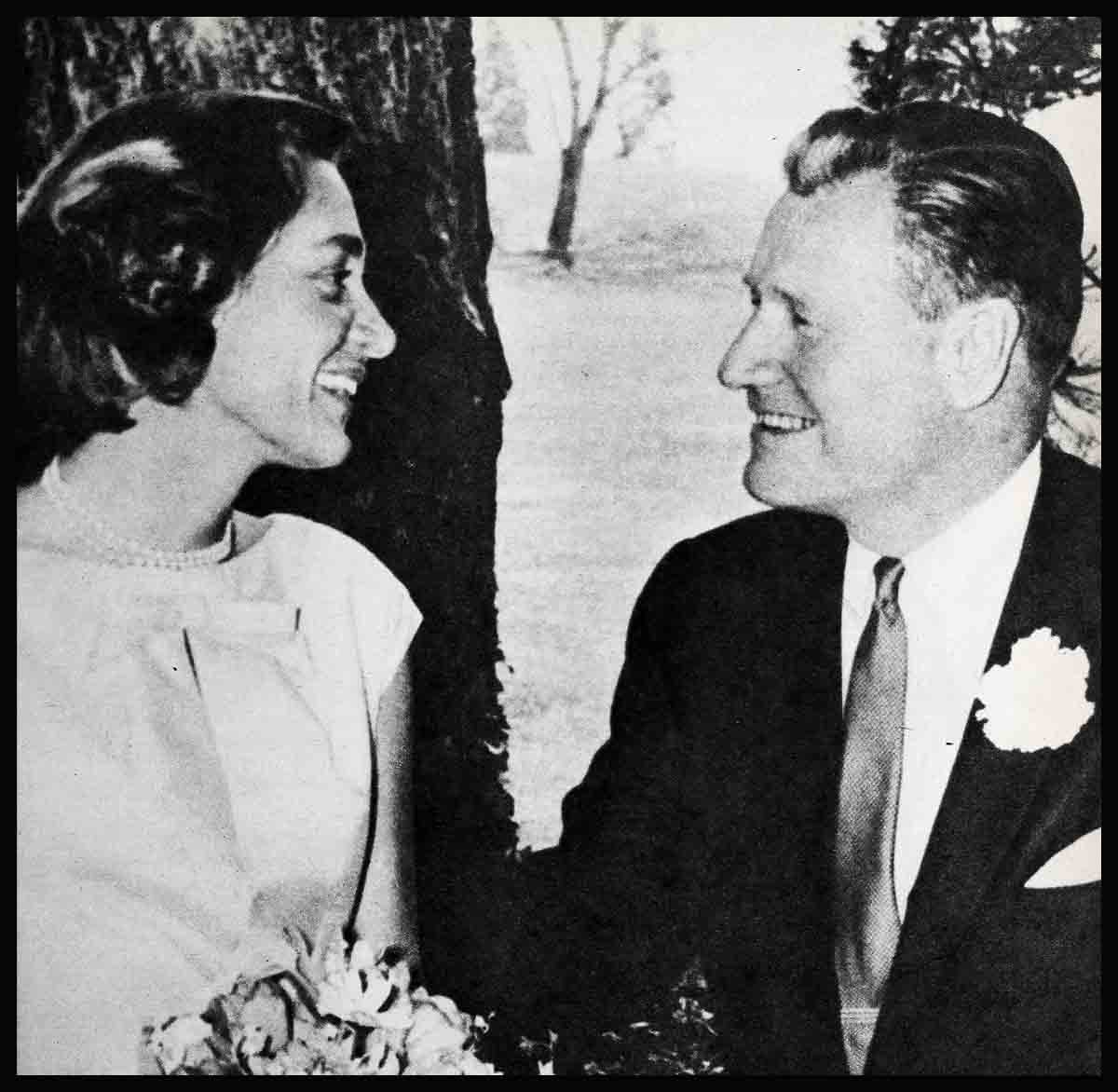
Love Is A Lousy Politician—Nelson Rockefeller
Not since December, 1936, when banner headlines proclaimed Edward VIII To Marry American Divorcee—King Vows To Give Up Throne For ‘The Woman I Love’ has such a shocking news story involving politics and romance exploded on a surprised world as the announcement of Nelson Rockefeller’s marriage to Mrs. “Happy” Murphy. Typical of the huge-letter, front-page headline treatment given this 1963 version of the Edward VIII Wallis Simpson story was the one which appeared in the New York Journal-American: Rocky Marries ‘Happy’—Risks His Chance for Presidency.
All news accounts seemed to concentrate primarily on a few scandalous details, once the skimpy actual information about the ceremony (barred to the press, incidentally) was covered. These details were: handsome Governor Nelson Rockefeller of New York, youthful at fifty-four, had wed a woman eighteen years his junior—tawny-haired, attractive Margaretta Fitler (Happy) Murphy, thirty-six; Rocky, the father of four grown children (a fifth had died), had been divorced seventeen months before by his first wife, Mary Todhunter Clark, after thirty-one years of marriage; Happy, the mother of four children ranging in age from three to twelve, had, after fourteen years of marriage, divorced her own husband. Dr. James S. (Robin) Murphy, just weeks before she said “I do” to Rockefeller.
The burning question
Yet, despite all the space which newspapers and magazines have devoted to Rocky and Happy’s wedding—and to the honeymoon that followed, there remain many questions that, up to now, have been unanswered.
How long has Rocky known Happy?
Where did they meet?
When did they fall in love?
Was Happy the unpublicized “other woman” when Rocky’s first wife divorced him?
Why did the papers keep the romance hush-hush?
What do clergymen, politicians, columnists and just ordinary guys and gals feel about the Rocky-Happy union?
How does Rocky’s family feel about his new bride?
Can Rocky, despite formidable odds, both have Happy and become President?
Fascinating questions. And here, for the first time anywhere, are some of the answers.
“The friendship between Happy and Gov. Rockefeller could be said to date back to the day she married Dr. Robin Murphy in December, 1948, at a big society wedding in Philadelphia.” says a former classmate of Happy’s at Shipley School in Bryn Mawr, Pa. “Robin was already highly regarded in Rockefeller Foundation circles.”
Well, it’s one thing to say that Robin and Happy and Rocky and “Tod,” his first wife, moved in the same milieu; it’s another to date 1948 as the beginning of Rocky and Happy’s “friendship.”
Other insiders claim that their romance began at Seal Harbor, Maine, where the Murphys had a summer home near the Rockefellers’ vacation place, and Rocky and Happy played tennis, swam, hiked and water-skied together.
This also is untrue.
The actual first meeting between Rocky and Happy took place at the house of David and Peggy Rockefeller (David, with whom Robin bad been friendly since he was a boy, is Nelson’s brother) on East 65th Street in Manhattan. You see. Happy and her husband had a house of their own on East 64th Street, and their garden backed up into the Rockefellers’ garden. Now because Happy and Peggy were close friends, it was only natural that they ignored the artificial separation between their homes and acted as if it didn’t really exist.
They joined in giving outdoor dinners and cocktail parties. It was at one of these affairs that Nelson and Tod Rockefeller met Robin and Happy Murphy—they were a foursome.
One of the guests who was there recalls that Rocky’s wife, after being introduced to Happy for the first time, was heard to say, “Why, she looks just the way I did at her age!” (It is interesting to note that in describing Happy recently, a close friend of hers said, “Happy is a lovely, lovely girl, very much like Tod in many ways, but gay, sharp, and friendly, where Tod is conventional.”)
Anyway, that was the beginning. The first meeting.
In 1958, with Robin working as a virologist with the Rockefeller Institute, it was only natural that the Murphys should be living in a home which they bought near Nelson’s Pocantico Hills estate in New York’s Westchester County. It was also only natural that Happy would become a volunteer worker for Rocky during his first campaign for governor.
The following year, Nelson Rockefeller, newly-elected Governor of the State of New York, entered the inaugural ball with Happy Murphy on his arm. A photographer snapped a picture of the pair dancing dreamily together.
Rocky appointed Happy’s husband. Dr. Murphy, as chairman of the State Mental Hygiene council.
Happy became a confidential secretary on the Governor’s private payroll. Pretty soon the word was out that the way to get to Rockefeller was through Happy.
But it wasn’t until July 18, 1960, that Happy’s name was linked in print to the Governor’s. It was on that date that a newspaper, in reporting the New York chief executive’s departure for the Republican convention in Chicago, listed his nine staff assistants and advisers. And, there, towards the end of the list was the name “Mrs. Margaretta Murphy.”
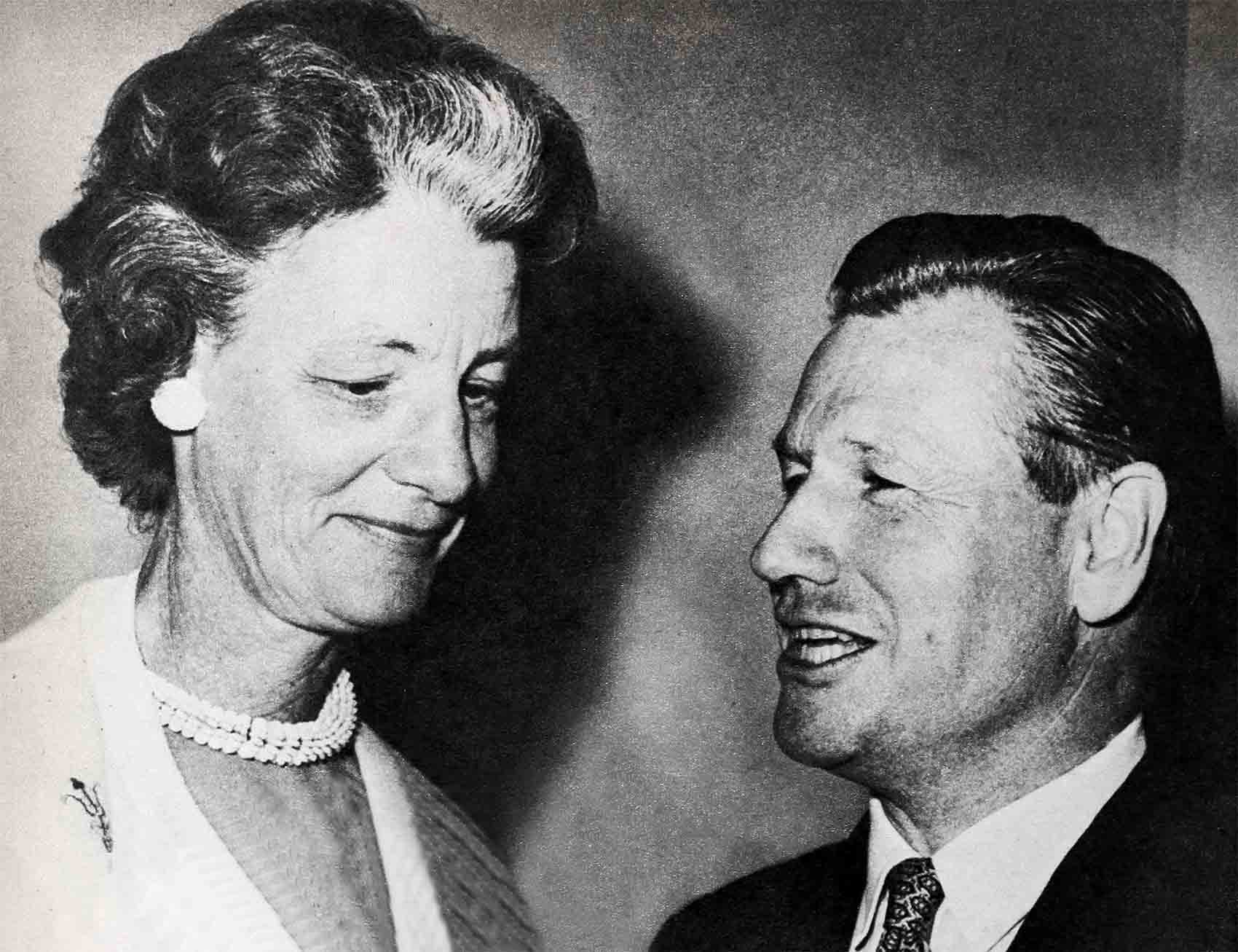
Replacement
About this time. Mrs. Mary Rockefeller began to be seen less and less frequently in public with her husband. Mrs. Happy Murphy, however, would appear in public with Rocky only when others were present.
Then, in May, 1961, Happy suddenly resigned from her job as Rocky’s secretary. Six months later, Mary Todhunter Clark Rockefeller separated from him.
Recently, in writing of the break-up of Tod and Rocky’s marriage after thirty-one years, Richard Starnes of the New York World Telegram & Sun said bluntly, yet perhaps perceptibly: “Unfortunately, however, the years had not been kind to the then Mrs. Rockefeller as they had been to her vigorous, almost boyish, spouse. The difference in their chronological age is little more than a year (she is the older), but the difference in their apparent age was considerable. All of us have seen the same phenomenon among our friends. . . .”
It was just about the time that the Rockefellers were separating that the Murphys were having troubles of their own. The New York Daily Mirror recently quoted an unidentified member of the Murphy household as recalling that during that period (Fall, 1961) the doctor and his wife “had quite an argument—the Governor’s name was mentioned—it was touch and go between them for a while.”
But later, when Photoplay’s columnist Walter Winchell began to print in his newspaper column such items as “The Philly Mainliner linked with a certain Governor is the estranged wife of a medic. Her initials are MM,” Margaretta (Happy) Murphy laughed and said, “Let them write what they want; they are all crazy.”
Crazy or not, the rumors persisted.
Cholly Knickerbocker of the Hearst press, on December 27, wrote: “It was ostensibly Mrs. O’Leary’s cow that caused the Chicago fire, but New York socialites are all saying that it is a certain Mrs. Murphy who has thrown the overalls in the chowder here. She is currently reported to be in Paris for her divorce.”
Knickerbocker’s rumor about a Paris divorce—and others that echoed it—goaded Robin Murphy into a reply. “Nonsense,” he commented. At the time when his wife was allegedly in Europe, she was actually off on a cruise with him.
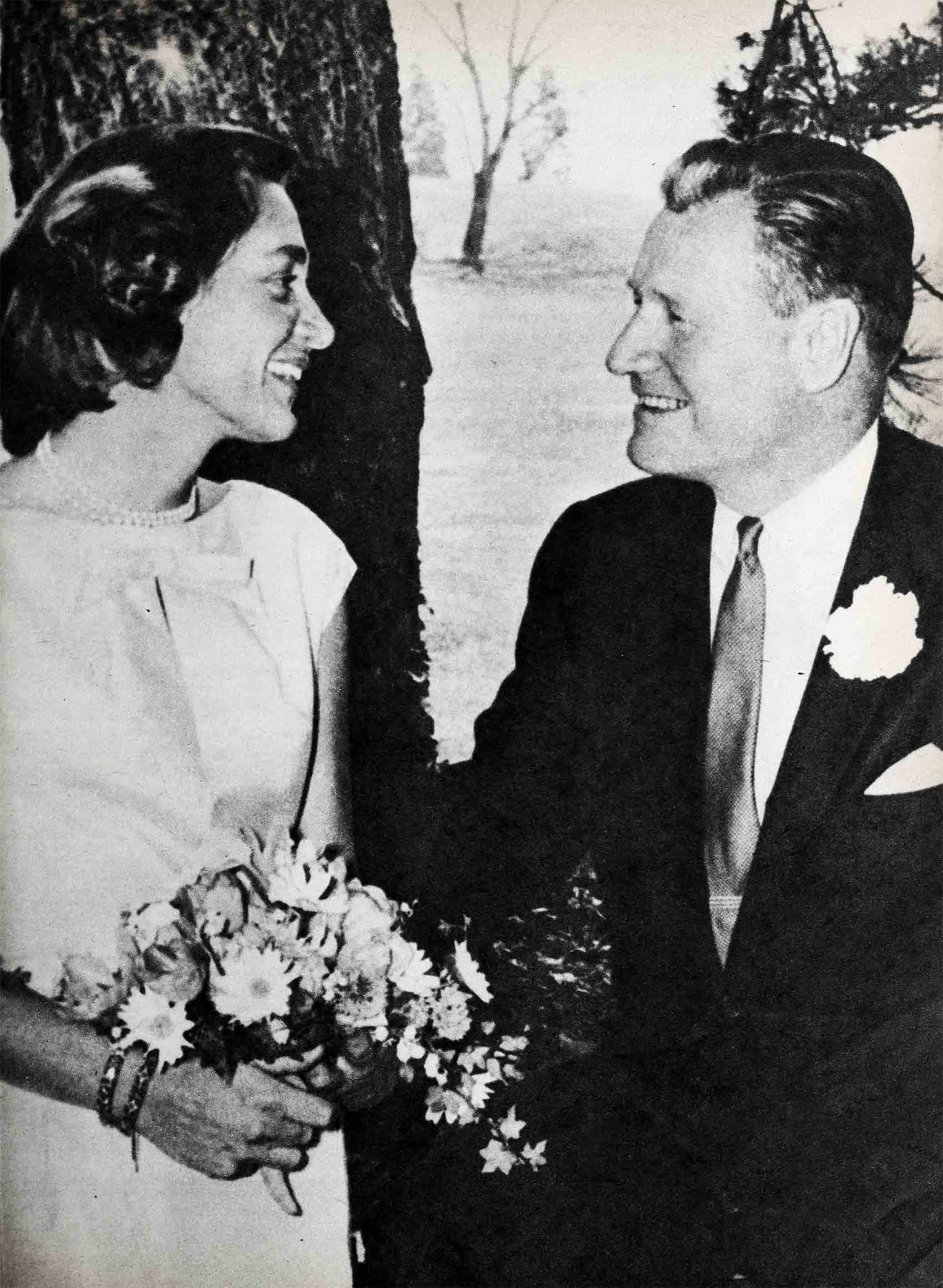
The tempo increases
But early in 1962, as Mary Rockefeller prepared to leave for Nevada to establish residence so that she could divorce her husband, the tempo of the rumors increased.
In January, the French newspaper Paris-Jour described. Mrs. Murphy as “energetic, of overflowing vitality and the type of person who adores life in the country” and predicted she would he “the future Mrs. Rockefeller.” This report was read just one time over a New York TV station, but was omitted from later telecasts that same night.
The first full-length article about Rocky and Happy appeared in the February, 1962, issue of Confidential—the only such magazine article until Mrs. Murphy’s divorce early in April 1963.
But the surprising thing was that there was not more press mention of the Rocky-Happy romance, or that the picture of Happy dancing dreamily in Rocky’s arms at the Governor’s inaugural ball back in 1959 had not been widely published.
Yet even if there’d been absolutely no mention in print of Rocky and Happy, social and political circles would have known all about their interest in each other. For as Life recently wryly commented about Happy’s mother, thrice-married Mrs. G. E. Bartol, Most of them (Happy’s Philadelphia Main Line friends) “had already heard the same rumors, some from Happy’s mother. ‘Her mother was so proud of the whole business,’ said one, ‘that once she all but held a press conference.’ ”
On March 16, 1962, Mrs. Rockefeller was granted a divorce on the grounds of mental cruelty. She was fifty-four years old. A witness present at the closed-court proceeding said sadly that she “must have aged ten years in an hour.”
An intimate friend says that what bothered Mary Rockefeller most at the time was that some people really believed it was she who wanted the divorce.
“That is absolutely untrue,” this same friend declares. “Twice she buried her pride for the sake of the family, and told her husband she was willing to overlook the rumors and continue the marriage. But each time, he insisted he wanted his freedom. Then, just before she went West for her divorce, she told him a third time that she hesitated to take the action and was doing it only because he wanted it that way. He persisted that it was what he wanted.”
This same friend revealed that Mrs. Rockefeller knew that her husband and Mrs. Murphy had been close friends since 1958, and insisted that when Mary pleaded with Rocky that last time, just before she went to Nevada, he confessed he was interested in someone else.
Now that Mary was divorced, reporters attempted to nail down definitely the fact that Happy was Rocky’s real love. But Robin Murphy pointed out to them that his wife was the mother of four children, one only eighteen months old, and as such she was “hardly a candidate as the other woman in Rockefeller’s life.
But more convincing to newsmen than the doctor’s protests were Rocky’s own actions. Though it later proved to be a “romantic smokescreen,” he was linked in rapid succession (but not necessarily in the following order) with such available (and unavailable) beauties as Joan Crawford, Zsa Zsa Gabor, Jinx Falkenberg and Greer Garson.
Yet by January of the present year, the Happy-Rocky rumors were rampant again. One report had it that she was about to divorce her husband and that the doctor would get a million-dollar settlement.
When confronted with this rumor, Robin smiled calmly and said. The whole thing is a joke. My wife and I are very happy. Would you sell your children for a million dollars?”
But this time, neither the newspapermen nor the doctor’s friends believed him. In fact, among the New York cocktail party set, Happy-Rocky gags became the rage. The favorite: An unknown dinner guest is asked. “What do you hear about Rocky and Happy?” He answers, “Nothing. I happen to be Dr. Murphy.
Cornered
Newsmen sought Happy everywhere trying to get a statement, but she eluded them. Finally, at the beginning of April, one reporter cornered her housekeeper outside the Murphy town house at 177 East 64th Street. Thatsmoked Mrs. Murphy out.
Happy (she’d picked up the nickname at the fashionable Shipley School at Bryn Mawr because, as a former classmate recalls. “she just made everybody happy ) was very un-happy, as she ran down the stairs and confronted the reporter. She loomed taller than her five feet, eight inches, her honey hair swirled furiously as it it were a nest of bees, her usually warm brown eyes were smoldering, and her voice had the bite of a wasp as she screamed, “Why don’t you leave me alone!”
But the press could not leave Happy alone any more than they can leave Wally Simpson or Liz Taylor alone. Her divorce from Dr. Murphy, after fourteen years of marriage, because of “grievous mental cruelty” (similar to the reason that Mary Todhunter Clark Rockefeller had given when she divorced Rocky in Reno, after thirty-one years of marriage) made front-page headlines. ‘Happy’ Murphy Gets Divorce—Socialite Linked to Rockefeller bannered the New York Daily News; THE Mrs. Murphy Wins Divorce streamered the New York Mirror.
Nor could reporters leave Robin. Happy’s ex-husband, alone. After the divorce. Happy herself went into seclusion and Rocky was able to hide behind a smiling “No Comment” when newsmen asked him when the wedding would be; but Dr. Murphy had neither of these defenses. As a working scientist and as the father of four children, he could not just disappear; and he didn’t know the secret of covering his feelings with a ready smile.
One day, as he stepped out of a cab, there were the reporters waiting for him.
The color ran out of his face, and he screamed, “Good God, what is wrong with you people? Let me alone! I will not say a word to any newspaperman—go see Mrs. Murphy !”
“Where?” he was asked.
“I don’t know,” he snapped back. His hand trembled as he tried to fit his key in the door. “Oh. my God. I can t even go into my house—you animals!
Reporters weren’t present at the Pocantico Hills home of Rocky s brother, Laurance C. Rockefeller, when the Governor was married to Happy in a surprise noon ceremony, just thirty-four days after she divorced Murphy. For that matter, many members of the Rockefeller family itself were conspicuous by their absence. Of his children, only Rodman C., the oldest, attended.
Happy’s four children had been delivered to the Rockefeller estate in a limousine the day of the wedding, but they did not attend the double-ring, 15-minute ceremony. Two days later, with their mother off for a South American honeymoon with her new husband, they were driven home in one of the Governor s black automobiles.
It was the possible injurious effect of the marriage on Happy’s children that most disturbed religious leaders:
“I agree with those, and there are many, who will see him [Governor Rockefeller] as a man who broke up a family in which there were four young children,” said Dr. Daniel Poling, editor of the Protestant Christian Herald.
The Rev. Dr. Benjamin Brown of Chicago, president of the American Baptist convention, said. “I am sure that the standards of national life are not helped very much by a public leader who, after lie has broken up two , families, says, I’m very happy myself.’ ”
Not only did Rocky and Happy come under attack, but so did the Presbyterian minister who performed the ceremony, the Rev Marshall L. Smith. It was pointed out that in officiating at the marriage of Rocky (who is a Baptist) to Happy (who is an Episcopalian) in “a hasty remarriage” of a “divorced person” before “a period of one year had elapsed from the date of the divorce”—without securing special approval from the Presbytery, Rev. Smith was subject to disciplinary action. (Some observers recalled that the Anglican minister who, in defiance of the Archbishop of Canterbury, had long ago presided at the wedding of the Duke and Duchess of Windsor back in 1937, was forced to quit his post soon afterward.)
The “divorce vote”
What this all added up to or meant, nobody knew. But the Republican politicians did know how they felt and said so loudly and heatedly.
Some suddenly discovered a whole bloc of voters that might swing an election, “the divorce vote.”
“If everyone who’s divorced, or who’d like to be divorced, were to vote for Rockefeller, he would be President,” said an Eastern political leader. . . . “The divorcee vote might do for Rockefeller what the Catholic vote did for Kennedy,” suggested a New York Republican newspaper.
But while some were sure he’d gain the “divorce vote” (according to the 1960 census, 3,204,773 Americans were then divorced and 2,264,025 were separated from their spouses), others were equally certain he’d lose the “women over 40” vote.
“When a man gives up a woman his age for one twenty years younger, it’s going to make a difference,” said Harry Fair- field, a Pennsylvania Republican official. . . . “Certainly the dowager wing of the party, those who wear the big hats covered with plastic fruit, clucked and pshawed over his divorce—and they are the ones now clucking and pshawing over his remarriage,” commented a Rockefeller Republican. . . . “In my opinion where he’ll hurt most is with the women—particularly those of 40 or over. If they see Rockefeller getting away with marrying a younger woman after getting rid of an older woman, they’ll be afraid their own husbands may get the same idea,” warned a New England GOP senator.
A number of Republicans figured that Happy might turn out to be a glamorous GOP equivalent of the Democrats’ Jackie Kennedy.
“If she turns out to be as helpful as Jackie Kennedy, it might be an asset” (Bayard Ewing, national committeeman from Rhode Island). . . . “If this gal is all they say she is, she may help him” (Mrs. Webster B. Todd, former national committeewoman from New Jersey). . . . And, “If he’s going to be President, he needs a First Lady. I don’t see any political harm in it” (Jean K. Toll, Colorado state chairman).
Newspaper columnists had their say, naturally, about whether, in choosing Happy, Rocky was losing his chance to be President.
Sheilah Graham was convinced that Rocky’s marriage “to his ‘Have A Happy’ will completely kill his chance for a Presidential nomination in ’64” and she advised him to wait until ’68 when “people will have forgotten about the older Mrs. Nelson Rockefeller” and “he might have some small children running around.”
In sharp disagreement with this “practical” approach was William F. Buckley Jr. who spoke for “those who believe that marriage is a sacramental relationship” which cannot be dissolved by the kind of divorce “you can purchase at Reno for six weeks’ hypocrisy and a couple of thousand dollars,” and who feel it would be “sacreligious to elevate to a position of the highest prestige a man who has broken a sacredly-proferred oath.”
Furthermore, Buckley, in asserting that “the institution of the family is basic to our culture,” suggested that if Rockefeller “had been a little more wise, a little more prudent, a little more charitable, a little more stoical—a little more something—his original marriage might have endured. . . . A President of the United States . . . is not expected to fail where so many other men have failed in keeping their families together: we expect more of our Presidents than we expect of ordinary men.”
On a completely different level of reaction, Society columnist Elsa Maxwell gushed, “All the world loves a lover. I do.”
But as Rocky and Happy return to the campaign wars, it will be public opinion—and not religious or political or columnist opinion—that will decide his political future. In a very real sense, Rockefeller’s prospects as a Presidential possibility may be in Happy’s hands. For as Rocky, fresh from his honeymoon, begins to make the circuit of fund-raising and delegate-wining dinners necessary to build up his candidacy. Happy will be at his side and all eyes will be on her.
She must make the voters forget—or at least forgive—the past, ignore the barbs aimed at her in the present (example: “News that Rocky divorced his wife of thirty-one years and married a younger woman has been withheld from Khrushchev by Mrs. Khrushchev”), and convince them she would be a fine First Lady in the future.
For Happy, this must be a frightening responsibility.
—JIM HOFFMAN
It is a quote. PHOTOPLAY MAGAZINE AUGUST 1963



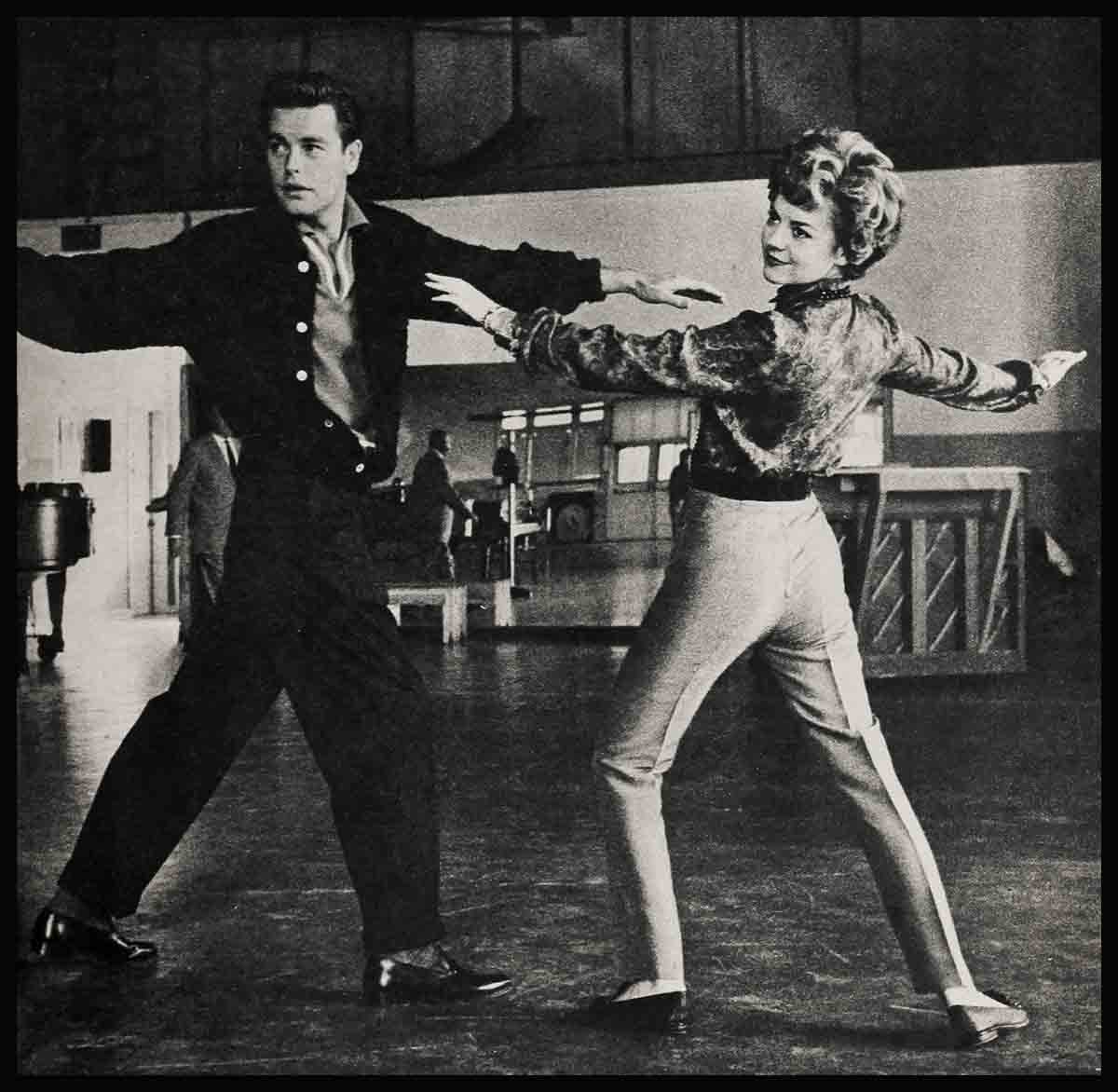
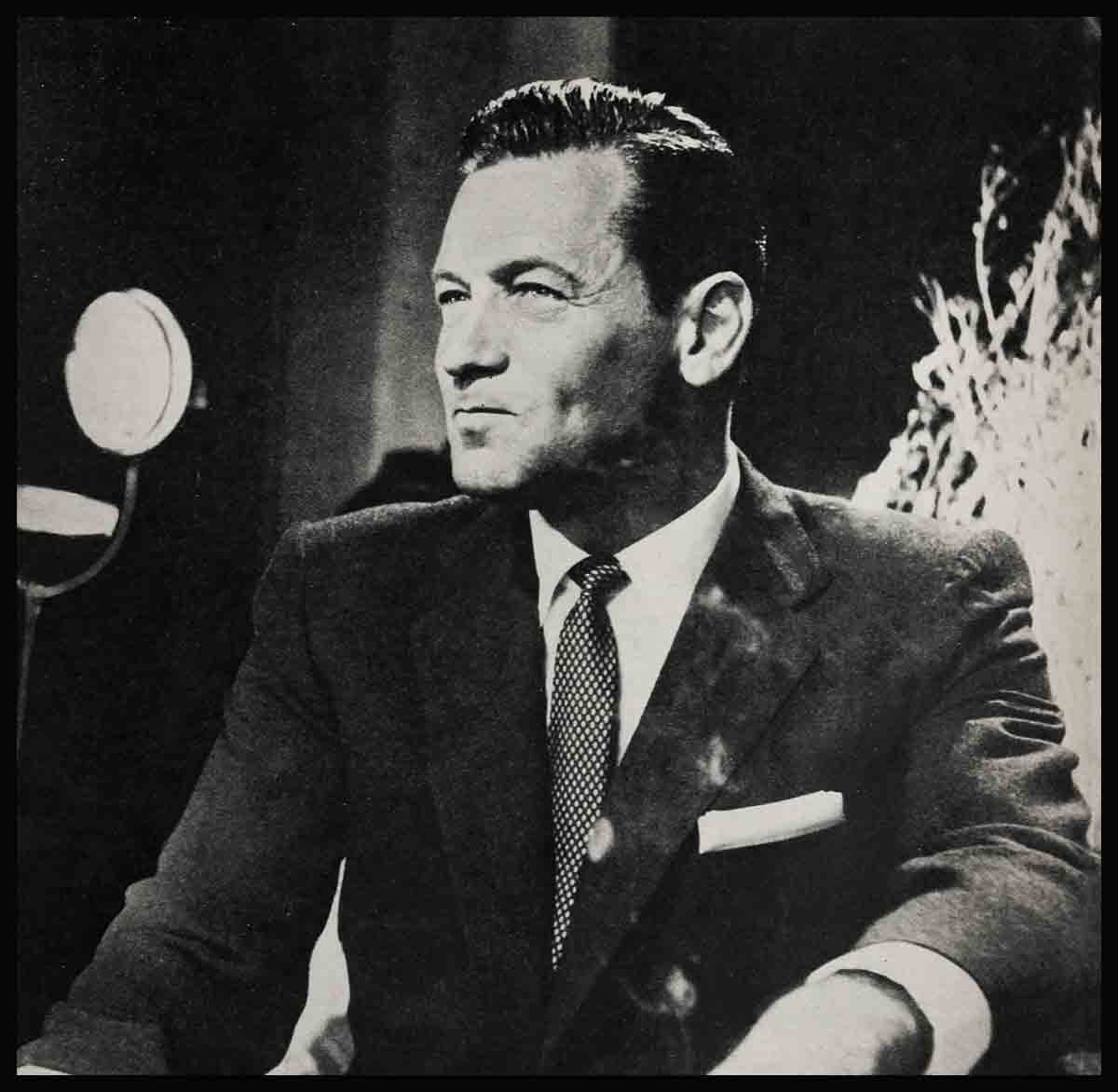
zoritoler imol
1 Ağustos 2023Some genuinely interesting information, well written and broadly speaking user pleasant.